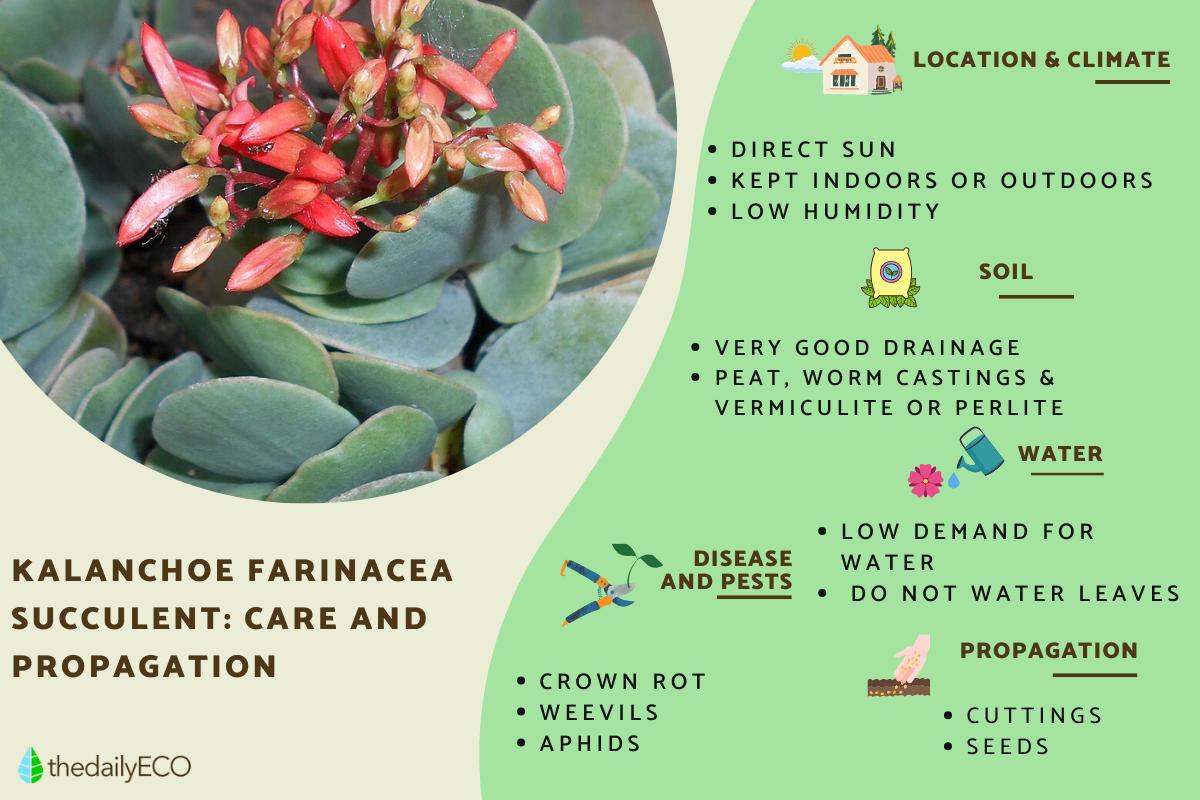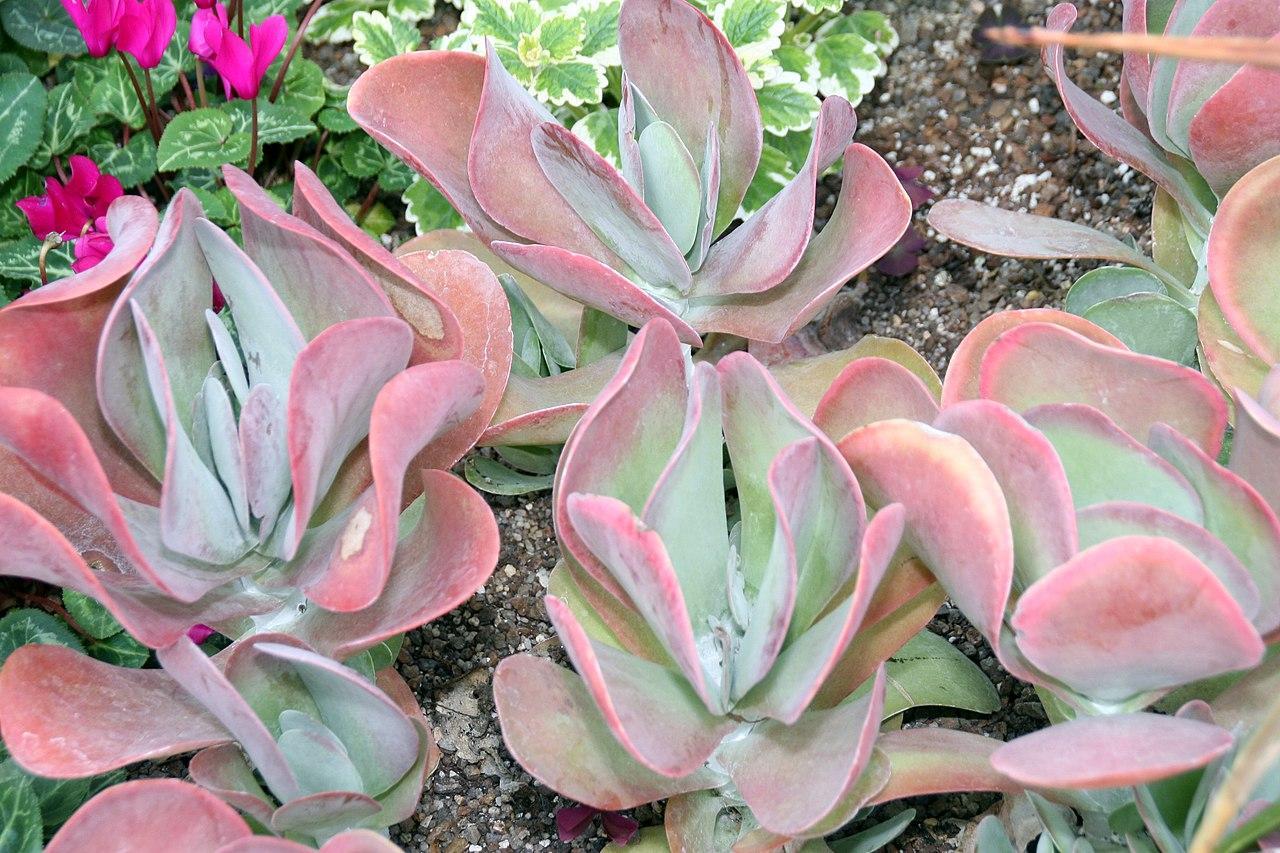Kalanchoe Farinacea - Care and Propagation


Kalanchoe farinacea care requires full sun exposure, well-drained soil and low irrigation. Propagation is done by dividing cuttings or by seeds. Kalanchoes are succulent plants native to dry areas of the African tropical belts. Due to their easy care and peculiar round leaves, they are highly sought after plants by collectors. There are more than 120 different species, each one with particular characteristics.
In this thedailyECO article, we explain Kalanchoe farinacea care and propagation. This plant is a great ornamental plant for both indoors and outdoors, although it will not suit all climates.
Characteristics of Kalanchoe farinacea
So we can better understand how to care for Kalanchoe farinacea, it will be helpful to have some idea about the characteristics of this type of succulent plant:
- Kalanchoe farinacea has oval leaves with entire margins, each measuring 1-2" (2-5 cm) long and growing up the stem.
- The entire plant reaches 12" (30 cm) high, classifying it as a small plant.
- This species of Kalanchoe differs from others because it has light green, whitish and slightly pink stems and leaves.
- It develops several shoots, growing as a bush.
- It develops a tall floral stem with tube-shaped, bright red flowers with yellow internal anthers. These appear during the day. In addition to being grown for its fleshy leaves, the flowers are quite striking and add a touch of color to gardens.
- It is endemic to Socotra, an island geographically Africa, but under the control of Yemen. This means that in its wild form it exists only on that island, but today it has already been exported throughout the world as an ornamental plant. To know how to have one at home, we present its basic care.

Light, temperature and location of Kalanchoe farinacea
In its natural environment it grows among rocks in dry grasslands, at altitudes of 100 to 800 meters. For this reason it is used as a plant for rocky or low-maintenance gardens. It needs full sun exposure or semi-shade, where it receives at least 6 hours of sun a day. This partial shade can be with indirect light, placing the pot indoors near a window or with light filtered with a curtain.
It is adapted to the warm climates of its native environment. It will need to avoid low temperatures, because it will not recover from them. If you live in temperate areas, it is best to place your K. farinacea in a pot so you can bring it indoors, to reduce the risk of dying.
Learn more about the best partial-shade plants for your home.

Substrate and fertilizer for Kalanchoe farinacea
This plant needs a substrate rich in organic matter and draining materials. To do this, we will prepare a mixture based on peat (or black soil), worm castings to provide nutrients and a draining material such as medium-grain tepojal or lava rock for plants.
At the bottom of the pot you use, place an additional thin layer of drainage material to prevent water stagnation. You should also choose a pot that has one or more holes in the bottom. In the growing months you can apply a liquid fertilizer to enhance abundant development during the Kalanchoe farinacea blooming season of late winter/early spring.
Learn how to make your own worm castings at home if you want to save some money.
Watering Kalanchoe farinacea
You will need to consider the following when irrigating Kalanchoe farinacea:
- It is very drought tolerant, so it is does not require much watering. Although this does not mean that it should be left to dry completely, because the plant will not develop well.
- The frequency of watering is determined by the temperature of its location, but the indicative factor will be the first centimeter of substrate. It must be allowed to dry between waterings. If kept outdoors, it tends to require water once a week. Indoor plants may require as little as once every two weeks. When the temperature drops, watering should be spaced out even further.
- It should not be overwatered because it will increase the probability of contracting the disease called crown rot. This is a proliferation of fungi and bacteria due to excessive humidity. This species is very particular because the fleshy leaves become scaly and peel when they begin to dry. When this happens, it means that your plant is under water stress and you need to increase the frequency of watering. It is very common for the plant to become scaly due to its low need for water, but you should not get complacent.
- It should be watered with the immersion method. This means that the pot must be placed in a container of water so that the substrate and roots absorb as much water as they need. If it is not possible for you to submerge the pot because the plant is planted directly in the ground, try not to wet the leaves and only apply the water to the substrate.
Learn about different types of a another succulent with our guide to the different types of echeveria.
Propagation of Kalanchoe farinacea
Now that you know the main care for Kalanchoe farinacea, we will talk about how to propagate it. It is very easy to reproduce kalanchoes, which is why many people like to have them in their garden. There are two ways to reproduce it:
- By division of cuttings: kalanchoes grow in colonies with offspring. These can be detached from the base along with the stem to place them in sand, which promotes root production. If you have growth or rooting hormones, you can use them on the tip of the cutting. It is watered to keep the sand always moist, until the plant has new roots to plant it in the new substrate.
- By seeds: if your flowers become fertilized, you can collect the seeds that will be produced inside the fruits. These look like dust and you have to use them carefully because they are so small. Once the fruit is completely dry, you can open it on a seedbed or seedbed with worm castings where they will germinate. You must water constantly.
Learn how to care for similar succulent plants with our care guides for paddle plants and topsy turvy succulent care and propagation.
If you want to read similar articles to Kalanchoe Farinacea - Care and Propagation, we recommend you visit our Plant care and cultivation category.
- Spanish ornamental flora: Salicaceae, Chrysobalanaceae. (2003). Spain: Junta de Andalucía, Department of Agriculture and Fisheries.







